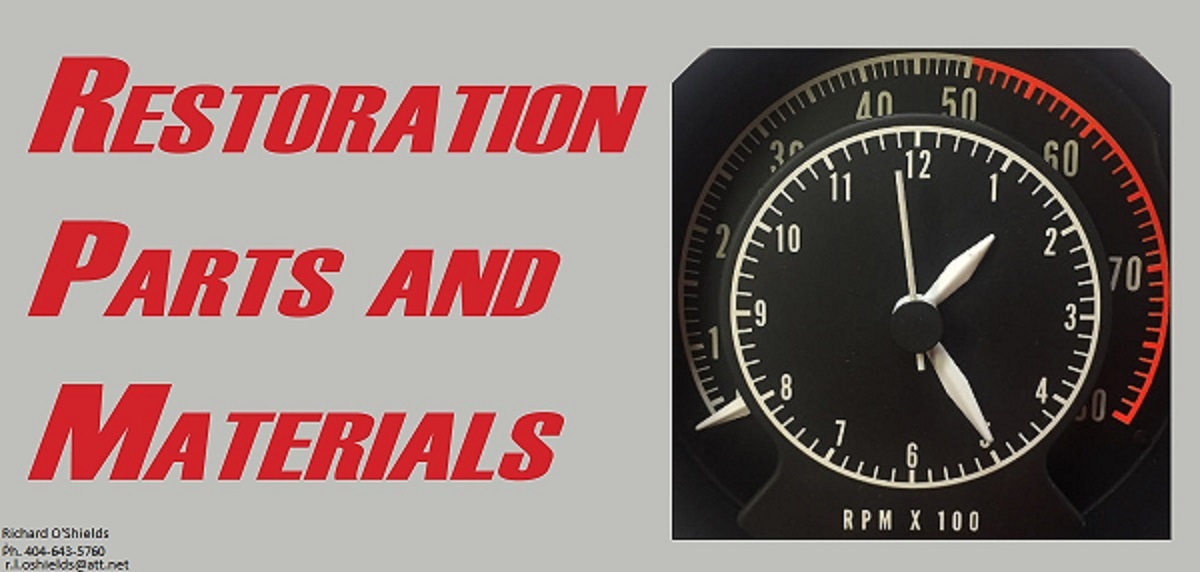Engines with LO, W rod ratios are "torque"-oriented, generally, and can have poor flowing heads and intake as the pistons spend less dwell time at TDC and YANK harder on the mixture stream than engines with higher rod ratios (302 Chevy small blocks, Chrysler 383) at right at 1.9. Some of OEM engines have approached 2.0, but I don't remember off hand which Oldsmobile V-8s they were.
What Chrysler did (according to an article in the old MoPerformance magazine) was to limit the swing of the connecting rod to 15 degrees, to keep side loading of the skirts in an area that didn't increase piston friction against the cylinder walls. Another approach to "rod ratio", which was first mentioned in a "Hot Rod" magazine article on the Chevy 430 Can-AM motor (NOT a version of the 427!).
In more modern engine designs, it seems that rod ratio is not a real consideration.
I have a NOS '72 440 Motor Home short block. The piston is .125" in the hole, for a rated 8.2CR. I measured it.
I first saw the quench dome piston at Mopar Nats a good while back. Hughes Engines had them for sale there. Basically makes a 906 head into a closed-chamber head, by changing pistons. Pretty neat.
David Vizzard has quite an extensive explanation of quench dimensions in one of his books on cylinder heads. His spec is .020" distance from the piston to the quench part of the combustion chamber. When that particular book came out, it proposed that more power could really be made with a closed chamber head, with less detonation tendencies, at higher CR, than with the traditional open chamber head. Gets back to chamber turbulence and keeping the air flow "active", by design.
As noted, using a longer rod to get a higher piston position will do nothing for CID.
Almost ALL current OEM pistons are much shorter than they used to be, by observation. Skirt length is less pronounced, by observation. The lack of the longer skirt dimensions can certainly increase their tendency to "rock" in the bore, BUT apparently if they are coated and fitted tight enough, that's not an issue. Hypereutectics have the strength of forged, but can be fitted as "cast" pistons. I have a set in my '77 Camaro 350 +.030. Over 200K miles and no piston noise . . . the Cloyes Plus Roller timing chain can still be heard.
Now, there are several stroker 440 builds in here. I believe they all use a 3.23 gear ratio and run in the 13 second 1/4 mile realm? HATE to be those u-joints!
Consider that the Imperials had a 2.94 rear axle ratio. Combined with the taller tires they had, it works out to the same mph/1000rpm as a 2.76 and H78x14 tire size used on NY in the later '60s. With that consideration . . .
You could build a "torque" 440 (using the stock cam and such), with normal-type parts, 9.0 CR, a 2.5" dual exhaust with good mufflers, and it should idle really nice in gear with the a/c on. THEN, change the 3-speed TF for one of the 4spd-OD units and change the rear axle ratio to 4.10 (which would still give you a lower cruise rpm in OD than what you now have with the 2.94 and tall tires. Would need a new driveshaft built, so you could opt for either carbon-fiber or aluminum.
Inside the motor? Use the lightest pistons you can find and it be reliable. Chrysler B/RB pistons usually hit 1000gms in weight! That's a LOT of metal swing around in there, not even considering the rod weight! Of course, a balance job would be necessary. The more power that can get to the flywheel, the better. And this is ONE way to do it.
Nothing exotic in the cylinder heads other than just a normal NHRA-legal port job and normal valve sizes. Maybe some aftermarket alloy heads, but not too big on the port flow specs as you want port velocity rather than pure volume. You want lots of "low lift" flow rather than huge flow at .600" lift. Choose a cam with assymetrical lobe shapes, to put more area under the lift curve. The old Comp Cams "HiEnergy" cams did this and newer Lunatis also claim to have this feature. A roller cam (if you can afford one) and roller rocker arms are another way to get friction out of the engine, but too many roller cams are "race cams", by observation, so "flat tappet hydraulic" might be the best way to go.
A torque motor that has no issues with hitting 5000rpm easily would be the ultimate goal. Having the "gear" can help that, too.
Does your Imperial have the factory "torque strap" on the rh side of the rear axle tube?
Just some thoughts,
CBODY67
What Chrysler did (according to an article in the old MoPerformance magazine) was to limit the swing of the connecting rod to 15 degrees, to keep side loading of the skirts in an area that didn't increase piston friction against the cylinder walls. Another approach to "rod ratio", which was first mentioned in a "Hot Rod" magazine article on the Chevy 430 Can-AM motor (NOT a version of the 427!).
In more modern engine designs, it seems that rod ratio is not a real consideration.
I have a NOS '72 440 Motor Home short block. The piston is .125" in the hole, for a rated 8.2CR. I measured it.
I first saw the quench dome piston at Mopar Nats a good while back. Hughes Engines had them for sale there. Basically makes a 906 head into a closed-chamber head, by changing pistons. Pretty neat.
David Vizzard has quite an extensive explanation of quench dimensions in one of his books on cylinder heads. His spec is .020" distance from the piston to the quench part of the combustion chamber. When that particular book came out, it proposed that more power could really be made with a closed chamber head, with less detonation tendencies, at higher CR, than with the traditional open chamber head. Gets back to chamber turbulence and keeping the air flow "active", by design.
As noted, using a longer rod to get a higher piston position will do nothing for CID.
Almost ALL current OEM pistons are much shorter than they used to be, by observation. Skirt length is less pronounced, by observation. The lack of the longer skirt dimensions can certainly increase their tendency to "rock" in the bore, BUT apparently if they are coated and fitted tight enough, that's not an issue. Hypereutectics have the strength of forged, but can be fitted as "cast" pistons. I have a set in my '77 Camaro 350 +.030. Over 200K miles and no piston noise . . . the Cloyes Plus Roller timing chain can still be heard.
Now, there are several stroker 440 builds in here. I believe they all use a 3.23 gear ratio and run in the 13 second 1/4 mile realm? HATE to be those u-joints!
Consider that the Imperials had a 2.94 rear axle ratio. Combined with the taller tires they had, it works out to the same mph/1000rpm as a 2.76 and H78x14 tire size used on NY in the later '60s. With that consideration . . .
You could build a "torque" 440 (using the stock cam and such), with normal-type parts, 9.0 CR, a 2.5" dual exhaust with good mufflers, and it should idle really nice in gear with the a/c on. THEN, change the 3-speed TF for one of the 4spd-OD units and change the rear axle ratio to 4.10 (which would still give you a lower cruise rpm in OD than what you now have with the 2.94 and tall tires. Would need a new driveshaft built, so you could opt for either carbon-fiber or aluminum.
Inside the motor? Use the lightest pistons you can find and it be reliable. Chrysler B/RB pistons usually hit 1000gms in weight! That's a LOT of metal swing around in there, not even considering the rod weight! Of course, a balance job would be necessary. The more power that can get to the flywheel, the better. And this is ONE way to do it.
Nothing exotic in the cylinder heads other than just a normal NHRA-legal port job and normal valve sizes. Maybe some aftermarket alloy heads, but not too big on the port flow specs as you want port velocity rather than pure volume. You want lots of "low lift" flow rather than huge flow at .600" lift. Choose a cam with assymetrical lobe shapes, to put more area under the lift curve. The old Comp Cams "HiEnergy" cams did this and newer Lunatis also claim to have this feature. A roller cam (if you can afford one) and roller rocker arms are another way to get friction out of the engine, but too many roller cams are "race cams", by observation, so "flat tappet hydraulic" might be the best way to go.
A torque motor that has no issues with hitting 5000rpm easily would be the ultimate goal. Having the "gear" can help that, too.
Does your Imperial have the factory "torque strap" on the rh side of the rear axle tube?
Just some thoughts,
CBODY67

















